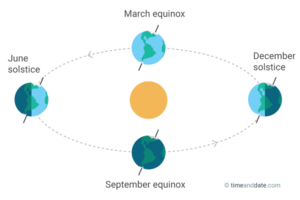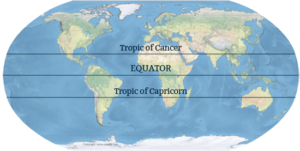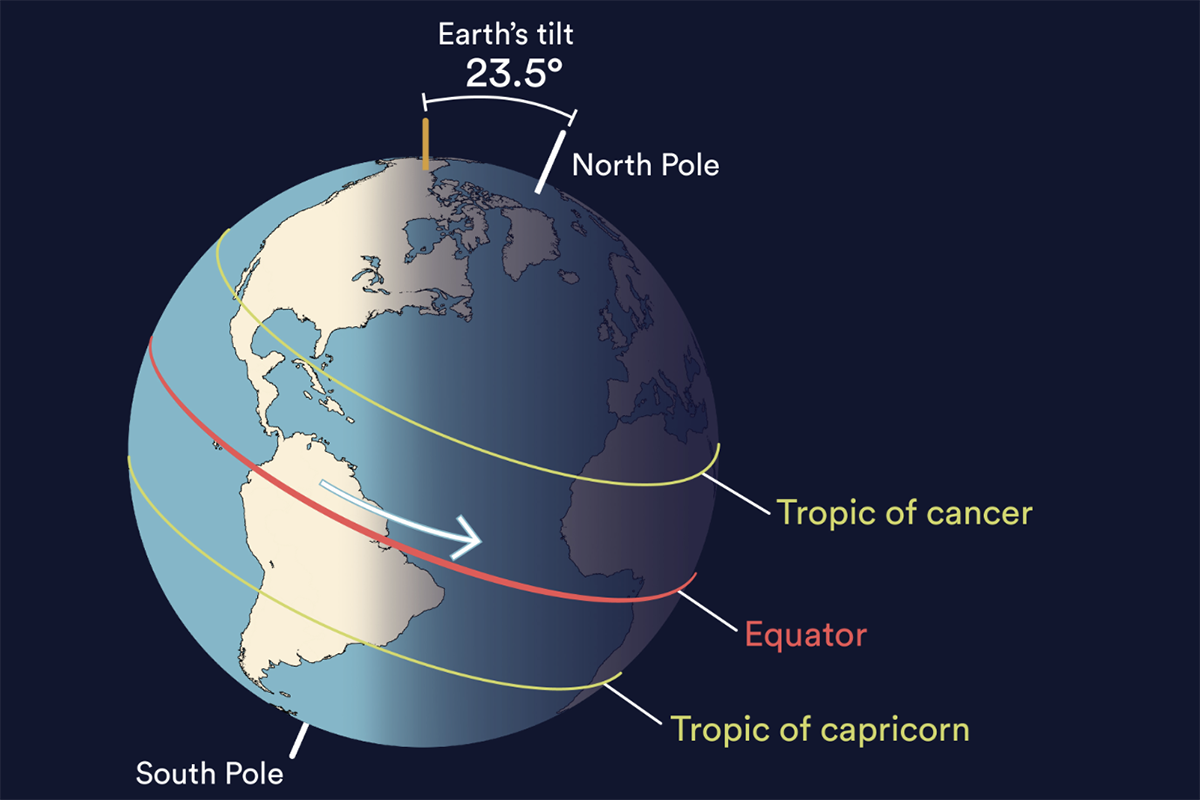Annual seasons
The Earth's axis of rotation is inclined at 23.5º and the plane of the Earth's equator does not coincide with that of the ecliptic. This determines our perspective of the annual movement of the Sun and the planets in the sky, and is key to the occurrence of the seasons of the year, since if the Earth did not have its axis tilted, there would simply be no seasons (in that case only one part of the Earth - the equator - would constantly receive the Sun's rays perpendicularly).

In a equinox, the sun's rays fall perpendicularly on the Earth's equator, and day and night last the same length throughout the world. Around March 21, the spring equinox takes place in the Northern Hemisphere, and the autumn equinox in the Southern Hemisphere. Around September 21, the opposite situation takes place (spring equinox in the South, autumn equinox in the North).
In a solstice, the Sun reaches its maximum southern or boreal position. On the southern summer solstice, the Sun reaches its zenith at the Tropic of Capricorn, and on the northern winter solstice, this occurs at the Tropic of Cancer. Around June 21, the summer solstice takes place in the Northern Hemisphere, and the winter solstice in the Southern Hemisphere. Around December 21, the opposite situation takes place (summer solstice in the South, winter solstice in the North).
It is possible to realize the above, if one notices how "high" either "low» the Sun rises above the horizon, during the peak moments of each season (solstices and equinoxes). For example, note the following animations (fountain).
In each of them you can see the path that the Sun describes from the city of Durham, during a equinox (the Sun reaches an intermediate point in the sky), during the Summer Solstice (the Sun reaches its maximum position) and Winter Solstice (the Sun reaches its minimum position). In each case, the height above the horizon is related to how "direct" or "perpendicular" the sun's rays reach each location.




The only places in the world where the sun's rays arrive perpendicularly during some of these events are those latitudes located above the Tropic of Capricorn (23° S), Tropic of Cancer (23° N) and about the Ecuador line (0°).
For example, the city of Antofagasta (approximately 23° S, 70° W) is located around this geographical area, so during a summer solstice, when the sun's rays arrive perpendicularly, objects they do not cast shadows for a few moments. Precisely, this city has a monument dedicated to showing the incidence of shadows during solstices and equinoxes.


